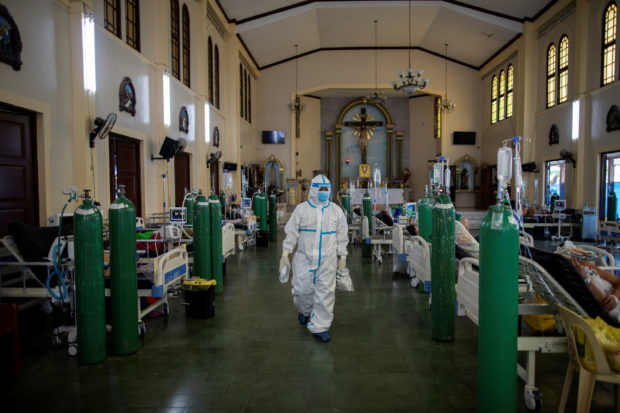MANILA, Philippines — Hospital bed occupancy for COVID-19 patients in Metro Manila increased by 41 percent while intensive care unit (ICU) utilization rose by 37 percent amid the sharp increase in new coronavirus cases, independent analytics group OCTA Research said Sunday.
“The number of occupied hospital beds for COVID-19 in the NCR (National Capital Region) increased by 41 percent over a span of one week, from 1,381 on December 24 to 1,942 on December 31,” OCTA Research fellow Guido David shared on Twitter.
“ICU occupancy for COVID-19 increased by 37 percent, from 231 to 316 over the same period,” he added.
According to David, hospital bed occupancy in Metro Manila is currently at 23 percent while ICU occupancy is 25 percent.
Both occupancy rates are still under safe levels based on criteria of the Department of Health (DOH). It will be declared moderate risk if it reaches 60 to 69 percent, high risk from 70 to 84 percent, and critical risk if it goes up to 85 percent or more.
Based on the January 1 case bulletin from DOH, the country’s occupancy for ICU beds is 20 percent. Meanwhile, 22 percent of isolation beds and 13 percent of ward beds are occupied.
The country recorded 3,617 new COVID-19 cases on New Year’s Day. Nearly 70 percent of these, or 2,530 additional cases, are from Metro Manila, based on the DOH tracker.
The active cases nationwide stands at 17,374, of which 45 percent, or 7,838 cases, are in the NCR.
According to Health Secretary Francisco Duque III, the sharp increase in new COVID-19 cases in the country could be due to the highly transmissible Omicron variant.
The country has so far recorded 11 imported cases and three local cases of Omicron.
With the detection of local cases, the DOH said there is a “high possibility” for the local transmission of the said variant.
